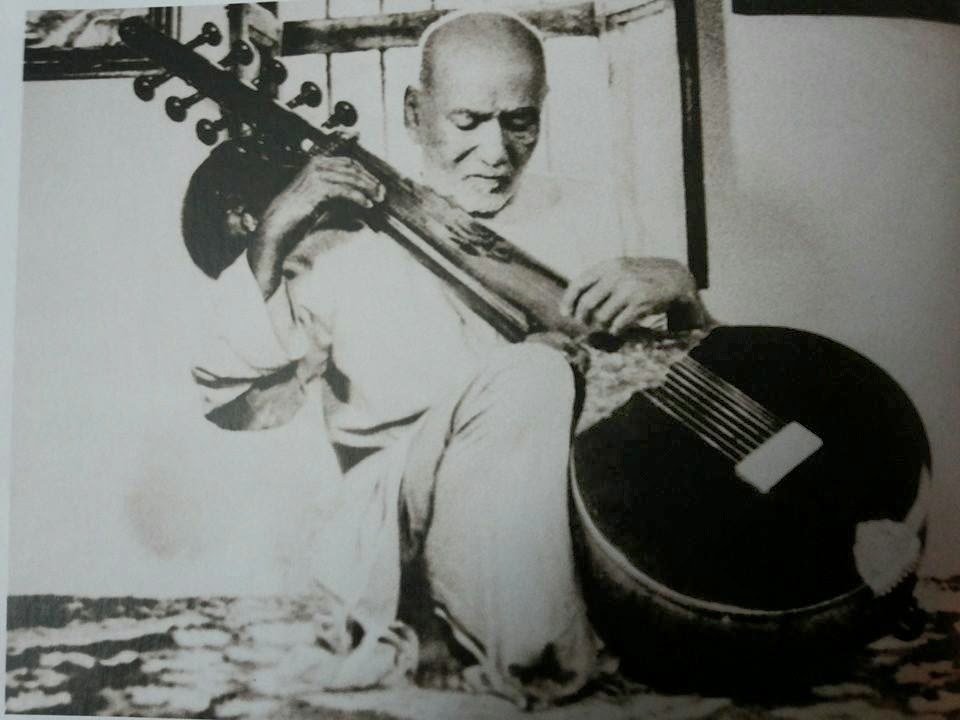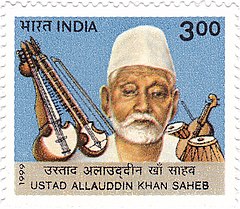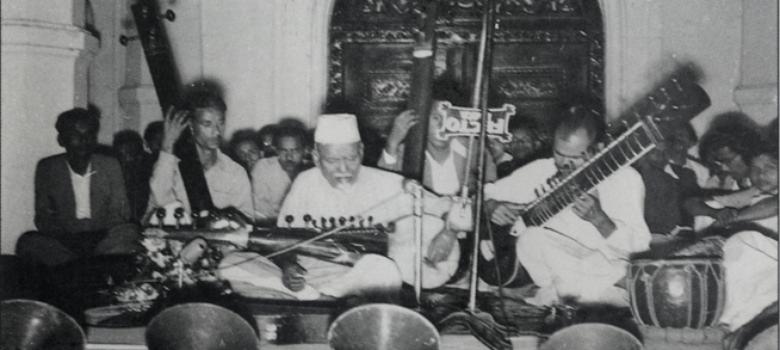Alauddin Khan and his Modern Sarod

Pt. Anindya Banerjee
Ustad Alauddin Khan is widely regarded as the person most directly responsible for transforming the sarod and the style of music played upon it into the form heard today. In the broadest terms, Alauddin Khan integrated desperate elements originally associated with different parts of the overall instrumental music tradition into a unified whole, within which a raga can be developed utilizing a broad range of techniques and genres. The result is a format that allows complete exposition of the moods and facets of the raga as a performer is capable of expressing during the course of a given performance. The format of raga development and presentation that he pioneered on sarod has been applied through his teachings and the teachings of his disciple, to all of the other instruments used in the performance of North Indian classical music, including sitar, violin, flute, santoor and guitar. Perhaps no other single musician has had such extensive influence across the broadest lines of the Hindustani classical music tradition in the twentieth century. Alauddin Khan’s music training exposed him to vastly different social worlds. His early years of study were in Calcutta during the last decade of the nineteenth century. He started learning vocal music with Nulo Gopal (Gopalchandra Chakraborty). After his sudden demise, he became a student at the music school founded by Raja Sir Saurindramohan Tagore. Alauddin Khan’s violin teacher, Habu (Amritalal)Dutta was cousin both of Narendranath Dutta, would later be known as Swami Vivekananda, the founder of Ramakrishna Mission. He also received a thorough exposure to the theory and practice of European music. studying western violin and learning to read staff notation from Lobo Prabhu. then Bandmaster of Eden Garden, Calcutta. He also learned Shenai from Hazani Ustad and Mridanga from Nanda babu.
The next stage of Alauddin Khan’s music training was centered by contrast in the tradition bound world of Muslim court musicians. Initially, as a student of sarod player Ahmed Ali Khan and his father Abid Ali Khan.at the court of Rampur. During his stay in Rampur, Alauddin Khan interacted with other musicians of the court of Rampur Nawab Hamid Ali Khan and received instrumental and vocal training from various teachers like Muhammad Hussain Beenkar, Raja Hussain Dhrupad singer Haider and Faida Hussain Khan Khuliya, etc. Finally, Alauddin Khan succeeded in being accepted as the disciple of Mohammad Wazir Khan, the last descendant of the Senia lineage from whom apart from sarod, he also received trainings on Dhrupad Sursringar and Dhrupadi or Seniya Rabab.
He is credited by his descendants and followers with having used this Senia training to combine the Senia styles of Rabab, Sursringar and Been by introducing a profusion of bol patterns, alankars and layakaris into his playing style on sarod. Along with these adaptions of the Senia technique and musical grammar, he also devised his own innovations. For instance. He expanded the musical structure of his performance by adapting and transposing the full structure of Senia raag alap into his sarod performances.
Apart from the formalization of raag alaap, he is also credited with further developing the Masit Khani gat. In the course of such experimentation, Alauddin Khan developed a slower and more intricate style of elaborating on this vilambit gat. By decreasing the tempo at which the Masit Khani gat was played, he was able to exploit intricate melodic and rhythmic techniques of Dhrupad style to further in the late 1920s. As many of the recordings of other sarodiyas from this time show the most common performances style played by these musicians continued Rats baseel on the Bandish’s Thumri style. By developing the ati-vilambit very slow) teentaal gats, as well as gits in other taals, Alauddin Khan created a sarod baaj that was quite distinct from those of his contemporaries.
In addition to the stylistic and structural innovations he made the playing style of sarod, Alauddin Khan made a number of significant modifications in his instrument, working with his Cousin Ayet Ali Khan, he fashioned d new type of instrument which could more easily facilitate the style of playing he had developed. He had two objectives in redesigning the sarod. The first was to extend the capabilities of the instrument, especially with regard in sustain overall resonance and depth of tone, through acoustic modifications. Second objective was to make the instrument more versatile and easier to play. The style of music he envisioned for the sarod incorporated a wide range of techniques. moving from very slow to very rapid execution of physical movements on the instruments.
The descendants and disciples of Alauddin Khan claim that this particular sarod playing descendants of Pathans maintain that their sarod essentially developed from the Kahuli Rabab. On the other hand, the descendants of Alaudrtin Khan contend that the type of Sarod they play is just a further modification of the Sursringar and has little to do with the Rabab. It is on this basis that Alauddin Khan is credited with establishing another gharana different from those of the Pathan sarod gharanas.




